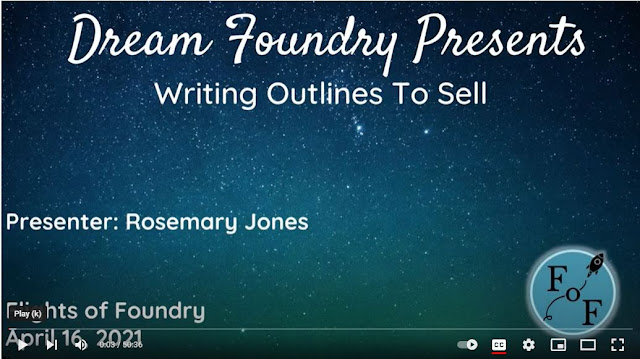Outlining to Pitch Rather Than Plot
There's a huge debate out in the creative community about whether you a "plotter" or a "pantser." If you come across these terms, people are talking about whether you outline your novel's plot before you start writing or if you write without an outline.
For me, outlining is part of the contract process. I need to pitch a plot idea through an outline before I receive the green light to write the book. This was true of novels and other projects that I wrote for Wizards of the Coast. It's the same for the Arkham Horror novels that I'm writing these days. In 2021, I was asked to explain what a "pitch" outline should contain as part of the writing seminars offered at the Flights of Foundry convention.
The video is no longer available for viewing but here's how I outline as pitch:
1. Keep it short. The initial idea may be only a line or two.
Some of my publishers have asked for a basic idea to see if it fits with their overall thoughts for the series. In general, I provide two or three ideas at the "elevator pitch" level: Family of graveyard keepers must prevent ghosts from overrunning Waterdeep (City of the Dead) or silent movie crew films in haunted house (Mask of Silver). This "outline" helps all parties involved agree on the basic idea of the book.
2. Be prepared to give the beginning and end in a simple outline.
Once the initial idea was approved, I am generally asked to create a one page outline for the editor to present to everyone else involved. Initially all my one pages for Wizards of the Coast were rejected and there went any chance of a book deal. Finally I wrote to an editor and said "what am I doing wrong?" Their very kind response was: "Your writing is great but we need to know who the main protagonist is, what is their biggest problem, and how do they overcome it. Don't describe anything else." I did this for the plot that eventually became Crypt of the Moaning Diamond, concentrating solely on the captain of my sappers and how she rescued her friends. It worked as they sent me a contract! I've stuck to the simple pitch outline since, making sure that my main protagonist, their biggest problem, and the solution to the problem is clear in every proposal.
As you can see from the above, this type of outline is geared to selling your idea for the book to a publisher or agent. Writing the whole novel may take a completely different type of outline, one where you do the detailed outlining to satisfy the plotter in your heart. Or you can take your single paragraph or simple one page description of the main character and their motivations as the start to your pantsing the way through the story. If you're pantsing, you may want to write the final scene where the problem is solved and stick it at the end of the manuscript so you can build toward the conclusion that you promised.
My finished books tend to be a bit of both approaches. I spend a lot of time figuring out how to get where I said I was going and do have a basic outline for the beginning, middle, and end of the book. But when I'm actually writing, many new characters, subplots, and odd little scenes will just appear. That's the fun of writing!




Comments